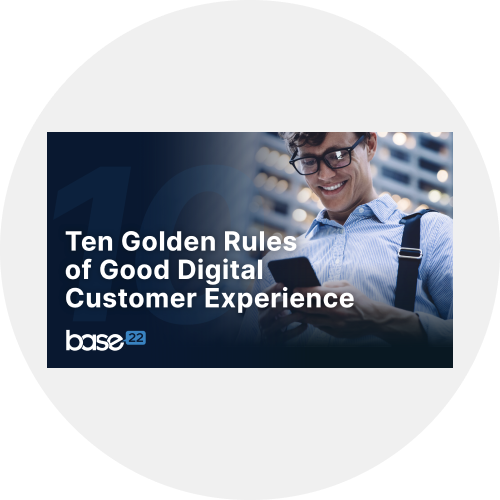
Organizations generate and accumulate content at an ever-increasing pace, but it’s only truly effective for business when it’s dynamic and intelligent rather than static. Audiences demand interactive and rich digital experiences, and that includes delivering smart content that matches your users’ interests and goals.
Static and one-dimensional content is neither adapted to the user on hand nor contextualized or action-oriented. Such content is less relevant and engaging, meaning users will naturally churn and fail to engage with it.
Modern Digital-First businesses need to leverage the power of smart content.
What Is Smart Content?
Smart content is a strategic asset and one of the cornerstones of a successful Digital Transformation. It is not just text: it includes images, infographics, numbers, data, analytics, documents, dashboards, and any consumable information that is useful to your user in the context of engaging your business.
Intelligent or smart content dynamically adapts to each user depending on demographics, behavior, and engagement. Unlike its static counterpart, smart content enables greater personalization, improved targeting, higher internal and external user engagement, and increased conversions.
Four Main Attributes of Smart Content
1. Relevant to the User
Whether creating a website, a business portal, or an e-commerce platform, your content must be relevant to the user.
According to a study by McKinsey, 71% of consumers expect brands to deliver personalized content. For instance, if you operate an e-commerce business, you may wish to adapt your content based on the customer’s demographics (gender and age), location, language, and past interactions with your brand.
In this approach, you can use smart content to target specific segments of your audience, personalize their experience and convert them into paying customers.
The same goes for internal stakeholders. Many organizations still rely on unstructured content, including business documents, websites, dysfunctional intranets, memos, and emails without associated metadata.
Such content reduces staff engagement and productivity. Smart content allows companies to tailor content depending on an employee’s role or department, so they don’t need to sift through a mountain of data and focus on what they really need.
71% of consumers
expect brands to deliver personalized content, according to McKinsey
2. Contextual
The essence of contextual content is delivering information based on the specific requirements or specific moments of a journey at the exact time users need it.
Context not only makes it clear who is the content owner but also to whom the information is directed and the purpose of it all. Smart content allows companies to deliver hyper-personalized and highly contextualized content and meet your prospects where they are.
Suppose a user stumbles upon an issue during a checkout process. Do they know what to do to solve the issue? Do they know who to reach out to and what to say to get support? Would generic messaging help them? Possibly not. They need information, support channels, and instructions that will help them solve the issue. Smart content lets you distribute information depending on visitors’ actions or characteristics.
3. Connected
Smart content must also curb disparate information and data to facilitate the user journey.
Whether it’s a buyer searching for a product, information on delivery or warranty, or an employee looking for a vacation form, intelligent content should be logically laid out and interlinked to other relevant resources.
Consider Wikipedia and how it presents the vast amount of content they create and manage. There are hundreds of thousands of pieces of content available to browse. Every article on this online encyclopedia has internal and external links that users can click on to learn more or interact with anything that they find interesting.
Smart content leverages navigation, “findability” and a precise Information Architecture to make your content easy to browser and consume, and serve precisely what users want.
4. Action-Oriented
Finally, you want to drive your customers to achieve their goals. Whether it is a purchase, booking an appointment, or managing their accounts, action-oriented content can help you achieve that.
Users, more than ever before, want to be empowered by businesses through self-service, allowing them to achieve their goals or complete a user journey.
Consequently, smart content combined with well-developed customer journey mapping can improve the user experience by allowing them to access information whenever they need it and on their terms.
So, whether we’re talking about offering account holders real-time access to account information in the banking industry or allowing consumers to monitor orders on an e-commerce site, it’s all about making it simple and seamless without forcing them to contact customer service.
Action-oriented content is not only displaying CTAs (call-to-actions), but understanding user journeys and how to help them to make decisions with rich information and data.
Bottom Line
Today’s challenges cannot be solved with strategies from the past. For modern companies and businesses, having “just a website” is not enough. They must leverage modern technology to go beyond providing stale information: enabling their audiences, understanding their needs, and providing digital experiences with smart content alongside robust online services.
At Base22, we work within various industries where we bring our unique Digital Transformation approach and solutions and help you to achieve your business outcomes, such as productivity, customer experience, and efficiency. Reach out to us and let’s discuss your current challenges.
Photo by Tyler Franta on Unsplash.

10 Golden Rules of Good Digital CX
Check out our booklet on Customer Experience for large and growing organizations.
Download


